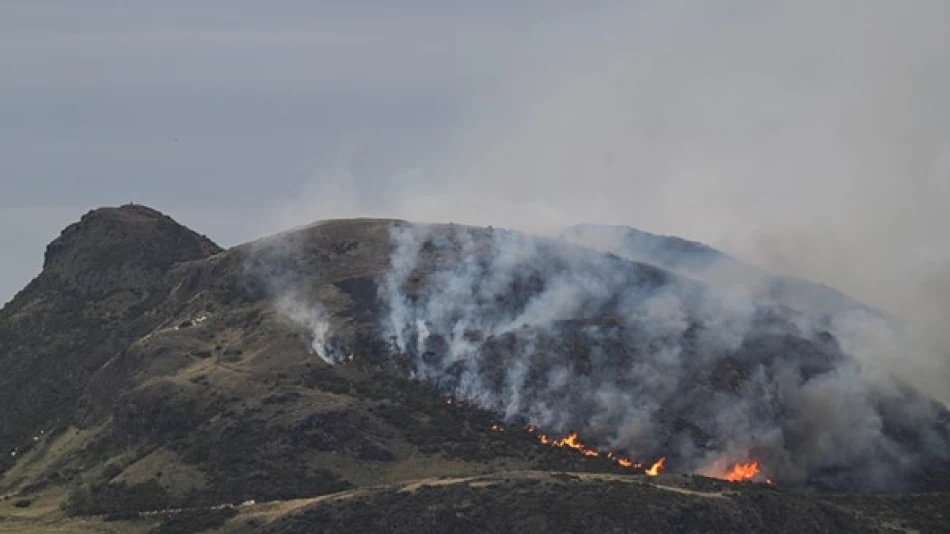
Iconic Scottish Landmark Engulfed in Flames: Firefighters Respond to Blaze
Fire Engulfs Edinburgh's Arthur's Seat During Peak Tourism Season
A major fire broke out on Arthur's Seat, Edinburgh's iconic volcanic landmark, sending plumes of smoke visible from kilometers away just as Scotland's capital enters its busiest tourism period. The blaze threatens to disrupt one of the city's most popular attractions during August, when Edinburgh hosts multiple world-renowned festivals and welcomes hundreds of thousands of visitors.
Emergency Response at Scotland's Most Visited Natural Landmark
Scottish Fire and Rescue Service crews responded to the open-ground fire at the 251-meter extinct volcano, which dominates Edinburgh's skyline and serves as the highest point in Holyrood Park. The fire spread extensively across the popular hiking destination, prompting authorities to advise drivers and pedestrians to avoid the area entirely.
Arthur's Seat sits adjacent to the Scottish Parliament and marks the eastern end of Edinburgh's famous Royal Mile, making it a cornerstone of the city's tourist circuit. The timing of the fire could hardly be worse for Edinburgh's tourism industry, which relies heavily on August visitors.
Perfect Storm: Fire Meets Festival Season
August represents Edinburgh's economic golden month, when the city simultaneously hosts the prestigious Edinburgh International Festival and the world's largest arts festival, the Edinburgh Festival Fringe. This year carries additional significance with the highly anticipated Oasis reunion tour adding to the city's cultural calendar.
The convergence of these events typically brings over 4.5 million visitors to Edinburgh during August alone, generating approximately £1 billion for the Scottish economy. Arthur's Seat serves as both a natural escape for festival-goers and a prime photography location offering panoramic views of the historic city.
Tourism Infrastructure Under Pressure
The fire highlights the vulnerability of Scotland's tourism infrastructure during peak season. Arthur's Seat attracts an estimated 2 million visitors annually, with August accounting for nearly 20% of that footfall. The landmark's accessibility—requiring no special equipment or permits—makes it particularly popular among international tourists seeking authentic Scottish experiences.
The economic implications extend beyond immediate visitor disappointment. Hotels, restaurants, and tour operators in Edinburgh have structured their August operations around the assumption that major attractions remain accessible. Any prolonged closure of Arthur's Seat could force costly itinerary changes and potentially damage Edinburgh's reputation as a reliable destination.
Climate and Conservation Concerns
Open fires on Britain's moorlands and hills have become increasingly common during summer months, reflecting broader climate patterns affecting tourism destinations across Europe. Similar incidents have impacted visitor attractions from the Scottish Highlands to Mediterranean islands, forcing the tourism industry to adapt to more frequent natural disruptions.
The fire also raises questions about conservation management in urban national parks. Holyrood Park, despite its city-center location, maintains significant areas of natural grassland and gorse that become highly combustible during dry periods—a challenge facing many heritage sites balancing public access with environmental protection.
Most Viewed News

 Layla Al Mansoori
Layla Al Mansoori






